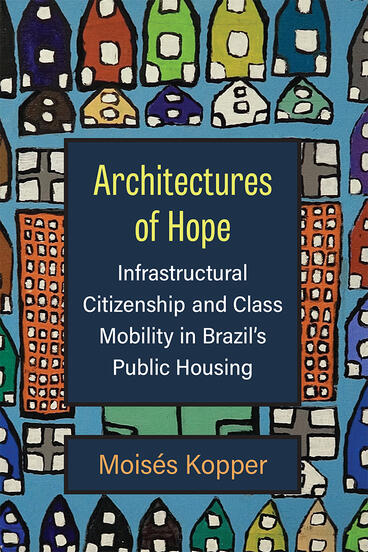Architectures of Hope
Infrastructural Citizenship and Class Mobility in Brazil's Public Housing
On the eve of the 2008 financial crisis, Brazil implemented its largest-ever public housing program, the Minha Casa Minha Vida
Description
Architectures of Hope examines how communal idealism, electoral politics, and low-income consumer markets made first-time homeownership a reality for millions of low-income Brazilians over the last ten years.
Drawing on a five-year-long ethnography among city planners, architects, street-level bureaucrats, politicians, market and bank representatives, community leaders, and past, present, and future beneficiaries, Moisés Kopper tells the story of how a group of grassroots housing activists rose from oblivion to build a model community. He explores the strategies set forth by housing activists as they waited and hoped for—and eventually secured—homeownership through Minha Casa Minha Vida’s public-private infrastructure. By showing how these efforts coalesced in Porto Alegre—Brazil’s once progressive hotspot—he interrogates the value systems and novel arrangements of power and market that underlie the country’s post-neoliberal project of modern and inclusive development.
By chronicling the making and remaking of material hope in the aftermath of Minha Casa Minha Vida, Architectures of Hope reopens the future as a powerful venue for ethnographic inquiry and urban development.
Moisés Kopper is a Postdoctoral Researcher at the Laboratoire d’Anthropologie des Mondes Contemporains.
News, Reviews, Interviews
Listen: Author Interview with New Books in Anthropology | July 19, 2023

